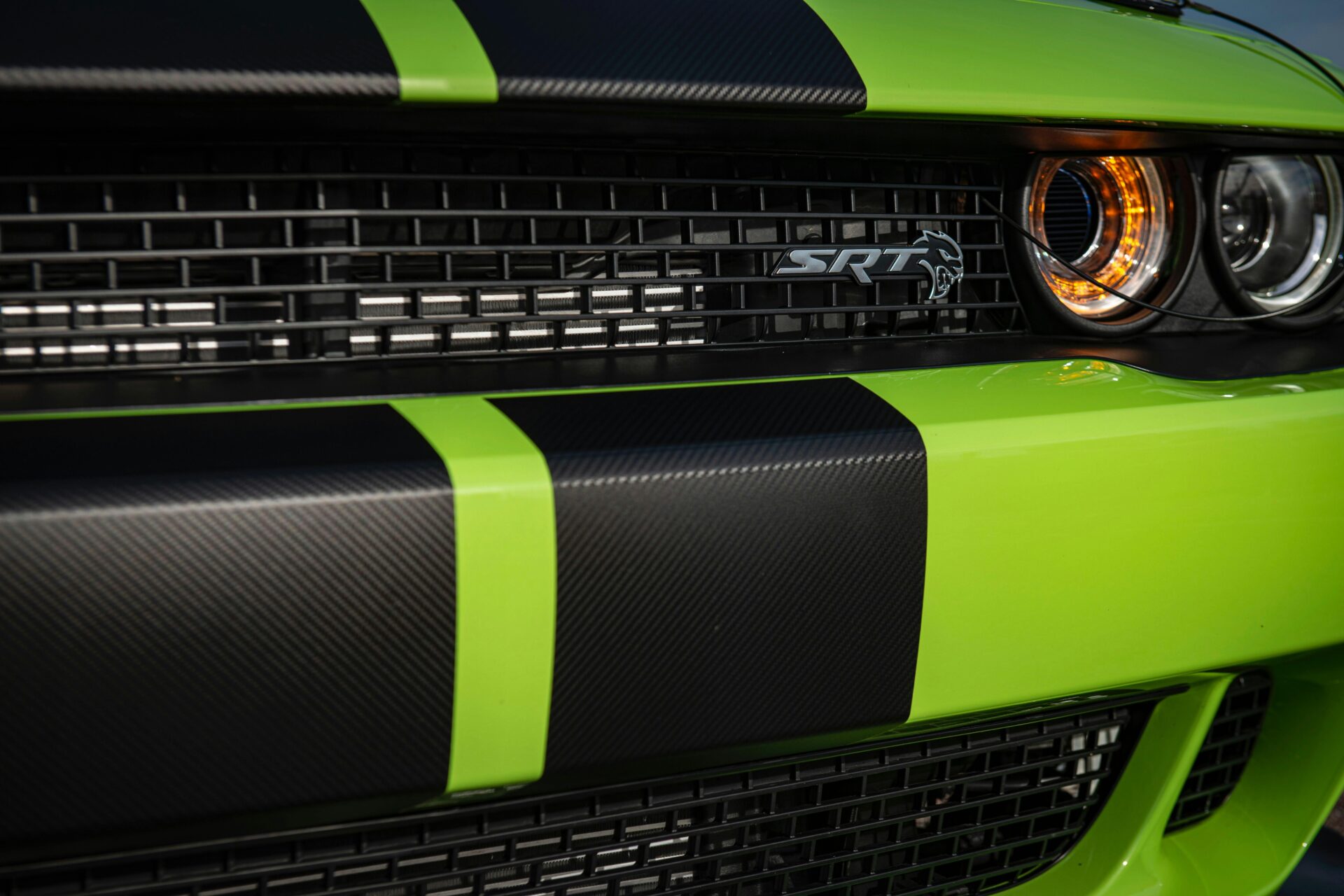
Why Is My Car Paint Chipping? Common Causes and How to Prevent It
Few things can ruin your car’s appearance faster than car paint chipping. What starts as a small flake or crack can quickly spread, exposing the metal underneath to rust and corrosion. If you’ve ever caught yourself thinking, “Why is my car paint chipping?”, you’re not alone – this is one of the most common concerns among car owners who care about maintaining a pristine exterior.
In this article, we’ll explore what causes paint chipping on cars, how to fix chipped paint on your vehicle, and – most importantly – how to prevent it in the future.
Common Causes Of Car Paint Chipping
The reasons behind chipped paint on a car can vary depending on the environment, driving habits, and maintenance routine. Let’s take a closer look at the most common culprits.
1. Road Debris and Gravel
One of the leading causes of car paint chipping is flying debris. Tiny stones, gravel, or sand particles thrown by other vehicles can hit your car’s surface at high speeds. Over time, these micro-impacts chip away at the paint, especially on the front bumper, hood, and side mirrors.
Regular highway driving or frequent travel on unpaved roads makes your car more vulnerable to this kind of wear. The damage often starts small but can quickly worsen, leaving exposed metal spots that are prone to rust.
2. Poor Quality Paint or Incorrect Application
Sometimes, paint chipping off a car isn’t caused by external damage but rather by poor-quality paint or incorrect application during a repaint. If the surface wasn’t properly prepared – for example, if there was dust, oil, or rust present – the paint won’t adhere correctly.
Low-quality paints or shortcuts in the drying and priming stages can also weaken adhesion. This makes it easy for the paint to start flaking, even with minimal friction or exposure to the elements.
3. Exposure to Harsh Weather Conditions
Extreme heat, direct sunlight, rain, and snow can take a toll on your car’s paint over time. UV rays break down the chemical bonds in the paint, causing it to fade, crack, or peel. Meanwhile, cold weather and road salt can accelerate corrosion once the paint begins to chip.
4. Improper Washing or Cleaning Techniques
Even your cleaning routine could be contributing to paint chipped off car surfaces. Using abrasive sponges, harsh chemicals, or automated car washes with stiff brushes can damage the paint layer. Over time, repeated friction weakens the clear coat and causes small chips that eventually expand.
5. Temperature Fluctuations and Moisture
Drastic temperature changes can cause the paint and metal body of your car to expand and contract at different rates. This stress leads to micro-cracks that later turn into visible chips. Add moisture to the mix, and you have a recipe for paint peeling and rust formation beneath the surface.
6. Mechanical Damage and Minor Accidents
Even a slight bump in a parking lot or a door ding can cause localized chipped paint on car surfaces. While these might look minor, the exposed areas can allow moisture and oxygen to reach the metal, accelerating oxidation.
Protect your paint before it’s too late. Get a Quote
How To Fix Chipped Car Paint
When you notice chipped paint on a car, acting quickly can prevent more serious damage. Even small chips can allow moisture and dirt to penetrate the metal surface, leading to corrosion. Whether you prefer a DIY approach or professional repair, knowing the right method will save you time and money while restoring your car’s sleek appearance.
Step 1: Clean the Damaged Area
Before any repair, the first step is to clean the affected area thoroughly. Use mild soap and water to remove dirt, oil, or wax around the chipped section. Once clean, dry the area completely using a soft microfiber towel.
Step 2: Sand the Chipped Edges
Use fine-grit sandpaper (preferably 1000–2000 grit) to smooth the edges of the chipped paint. Sand gently around the area to remove loose flakes and create a level surface for painting. Avoid sanding too aggressively, as this may enlarge the damaged area.
Step 3: Apply Primer (If Needed)
For deeper chips that expose the metal layer, a primer is essential. Priming seals the surface, preventing rust formation and ensuring that the paint bonds securely. Allow the primer to dry according to the manufacturer’s recommendations before applying the color coat.
Step 4: Apply Touch-Up Paint
Use a touch-up paint that matches your vehicle’s color code. You can usually find this information on a sticker inside the driver-side door or in your owner’s manual. Shake the bottle well before application, and use a fine brush for accuracy.
Step 5: Finish With a Clear Coat
Once the paint has dried, seal it with a clear coat to protect the area and enhance the shine. This step restores the glossy look of your car’s exterior while shielding the repair from UV damage and moisture.
Step 6: Polish and Blend
After the repaired section has cured, lightly polish it using a fine polishing compound. This smooths out minor imperfections and blends the repaired paint seamlessly with the surrounding area.
Get expert repair advice today. Schedule an Appointment
How To Prevent Future Paint Chipping
Fixing chipped paint on a car is only half the battle – the real key is prevention. By following the right maintenance and protection practices, you can preserve your car’s finish for years. Here’s how to stop car paint chipping before it starts.
Regular Washing and Waxing
Consistent cleaning isn’t just about aesthetics; it’s one of the most effective ways to protect your paint. Dust, grime, and pollutants can eat away at your clear coat if left unchecked. Washing your car once a week removes these harmful particles and keeps your exterior looking sharp.
Use Paint Protection Film (PPF)
Paint Protection Film, or PPF, is a transparent layer that covers vulnerable areas of your car, such as the hood, front bumper, and mirrors. It absorbs the impact from road debris and prevents car paint chipping in high-risk zones.
PPF is especially beneficial for highway drivers or those living in areas with gravel roads. Though it requires a professional installation, it’s one of the best long-term solutions for keeping your paint flawless.
Park in Covered or Shaded Areas
Sunlight and extreme temperatures can cause your car’s paint to chip prematurely by weakening the clear coat. Whenever possible, park in a garage, under a carport, or in shaded spots.
If covered parking isn’t available, consider using a UV-resistant car cover. This helps protect against both sunlight and harsh weather, reducing the risk of fading, cracking, and chipped paint car damage.
Avoid Harsh Cleaning Tools
Many people unknowingly damage their own paint through poor cleaning habits. Avoid using old rags, stiff brushes, or abrasive sponges that can scratch your paint. Instead, invest in microfiber cloths and non-acidic car shampoos.
Automatic car washes with rotating brushes are also notorious for causing micro-abrasions that eventually turn into paint chips. Hand washing is gentler and safer for maintaining a smooth, chip-free surface.
Apply a Ceramic Coating
Ceramic coatings have become increasingly popular among car enthusiasts for their exceptional durability and shine. When properly applied, they create a hydrophobic surface that repels water, dirt, and contaminants – dramatically reducing the chances of car paint chipping issues.
Maintain Safe Following Distance
This tip might sound simple, but it’s highly effective: maintaining a safe distance from the car ahead of you can prevent rock chips. Gravel and debris kicked up by other vehicles often cause paint to chip off the car’s surface, especially at high speeds.
Seasonal Inspections and Maintenance
Inspect your vehicle’s paint every few months, especially before and after winter. Road salt, ice, and slush can accelerate corrosion and increase the risk of paint chipping on car surfaces.
Touch up small chips immediately – even before they’re noticeable. Early intervention keeps your car’s finish intact and prevents expensive repairs later.
When To Repaint Your Car
Sometimes, small touch-ups and preventive care aren’t enough. If car paint is chipping extensively or fading in multiple areas, it might be time to consider a professional repaint. Repainting doesn’t just improve the look of your car – it also restores protection to the underlying metal.
Signs You Need a Repaint
- Large or Multiple Chips: When you start noticing paint chipping off car panels in several places, it’s often a sign that the protective layers have worn out.
- Visible Rust: Once rust appears beneath the paint, touch-ups won’t stop the spread. A complete repaint ensures that corrosion is removed and the metal is properly sealed.
- Peeling Clear Coat: If your car’s surface looks dull or has rough, flaky spots, the clear coat has likely failed. Repainting is the only way to restore a smooth, glossy finish.
- Color Fading or Mismatched Panels: Uneven color or faded areas suggest UV damage or inconsistent repairs from the past. A full repaint guarantees a uniform, factory-like appearance.
Conclusion
Car paint chipping might seem like a small cosmetic issue at first, but it can quickly turn into a major problem if ignored. What starts as a few minor flakes can lead to rust, corrosion, and costly repairs.
If your car paint is chipping, take action early. Simple DIY touch-ups can fix minor spots, but widespread damage or rust requires professional care. If your car’s paint is starting to chip, our experts can help restore and protect it for years to come.
FAQ
1. How to fix chipping paint on a car?
Clean the chipped area, sand lightly, apply primer and touch-up paint, then finish with a clear coat for protection.
2. Why is my car’s paint chipping?
It usually happens due to road debris, sun exposure, harsh weather, or poor paint adhesion during previous applications.
3. How to stop paint chipping on cars?
Regularly wash and wax your car, use paint protection film or ceramic coatings, and avoid harsh cleaning tools or environments.
- Unique Challenges for Tesla Paint Protection Film - November 24, 2025
- PPF and Car Wash Conundrum: Maintenance, Swirls, and Ceramic Top Coats - November 19, 2025
- Why Is My Car Paint Chipping? Common Causes and How to Prevent It - November 14, 2025



